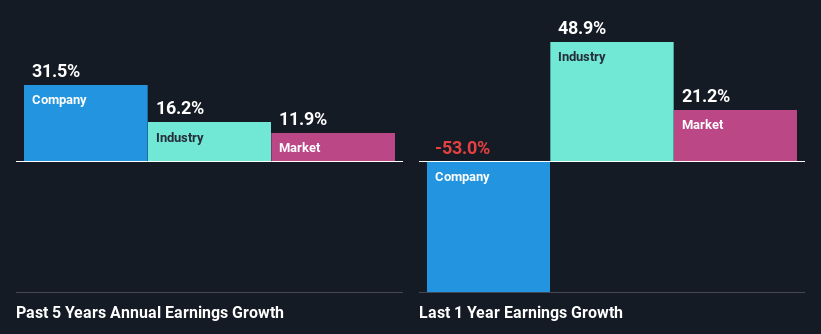Is Power Integrations, Inc.'s (NASDAQ:POWI) Latest Stock Performance Being Led By Its Strong Fundamentals?
Power Integrations' (NASDAQ:POWI) stock up by 4.8% over the past month. Given its impressive performance, we decided to study the company's key financial indicators as a company's long-term fundamentals usually dictate market outcomes. Specifically, we decided to study Power Integrations' ROE in this article.
ROE or return on equity is a useful tool to assess how effectively a company can generate returns on the investment it received from its shareholders. Simply put, it is used to assess the profitability of a company in relation to its equity capital.
View our latest analysis for Power Integrations
How Do You Calculate Return On Equity?
The formula for ROE is:
Return on Equity = Net Profit (from continuing operations) ÷ Shareholders' Equity
So, based on the above formula, the ROE for Power Integrations is:
11% = US$95m ÷ US$854m (Based on the trailing twelve months to March 2021).
The 'return' refers to a company's earnings over the last year. Another way to think of that is that for every $1 worth of equity, the company was able to earn $0.11 in profit.
What Has ROE Got To Do With Earnings Growth?
We have already established that ROE serves as an efficient profit-generating gauge for a company's future earnings. Depending on how much of these profits the company reinvests or "retains", and how effectively it does so, we are then able to assess a company’s earnings growth potential. Assuming all else is equal, companies that have both a higher return on equity and higher profit retention are usually the ones that have a higher growth rate when compared to companies that don't have the same features.
A Side By Side comparison of Power Integrations' Earnings Growth And 11% ROE
At first glance, Power Integrations seems to have a decent ROE. Even when compared to the industry average of 14% the company's ROE looks quite decent. This probably goes some way in explaining Power Integrations' significant 31% net income growth over the past five years amongst other factors. However, there could also be other drivers behind this growth. For example, it is possible that the company's management has made some good strategic decisions, or that the company has a low payout ratio.
We then compared Power Integrations' net income growth with the industry and we're pleased to see that the company's growth figure is higher when compared with the industry which has a growth rate of 16% in the same period.
The basis for attaching value to a company is, to a great extent, tied to its earnings growth. What investors need to determine next is if the expected earnings growth, or the lack of it, is already built into the share price. This then helps them determine if the stock is placed for a bright or bleak future. Is Power Integrations fairly valued compared to other companies? These 3 valuation measures might help you decide.
Is Power Integrations Efficiently Re-investing Its Profits?
The three-year median payout ratio for Power Integrations is 30%, which is moderately low. The company is retaining the remaining 70%. By the looks of it, the dividend is well covered and Power Integrations is reinvesting its profits efficiently as evidenced by its exceptional growth which we discussed above.
Additionally, Power Integrations has paid dividends over a period of at least ten years which means that the company is pretty serious about sharing its profits with shareholders. Existing analyst estimates suggest that the company's future payout ratio is expected to drop to 21% over the next three years. The fact that the company's ROE is expected to rise to 18% over the same period is explained by the drop in the payout ratio.
Conclusion
In total, we are pretty happy with Power Integrations' performance. Specifically, we like that the company is reinvesting a huge chunk of its profits at a high rate of return. This of course has caused the company to see substantial growth in its earnings. With that said, the latest industry analyst forecasts reveal that the company's earnings growth is expected to slow down. To know more about the latest analysts predictions for the company, check out this visualization of analyst forecasts for the company.
This article by Simply Wall St is general in nature. It does not constitute a recommendation to buy or sell any stock, and does not take account of your objectives, or your financial situation. We aim to bring you long-term focused analysis driven by fundamental data. Note that our analysis may not factor in the latest price-sensitive company announcements or qualitative material. Simply Wall St has no position in any stocks mentioned.
Have feedback on this article? Concerned about the content? Get in touch with us directly. Alternatively, email editorial-team (at) simplywallst.com.

